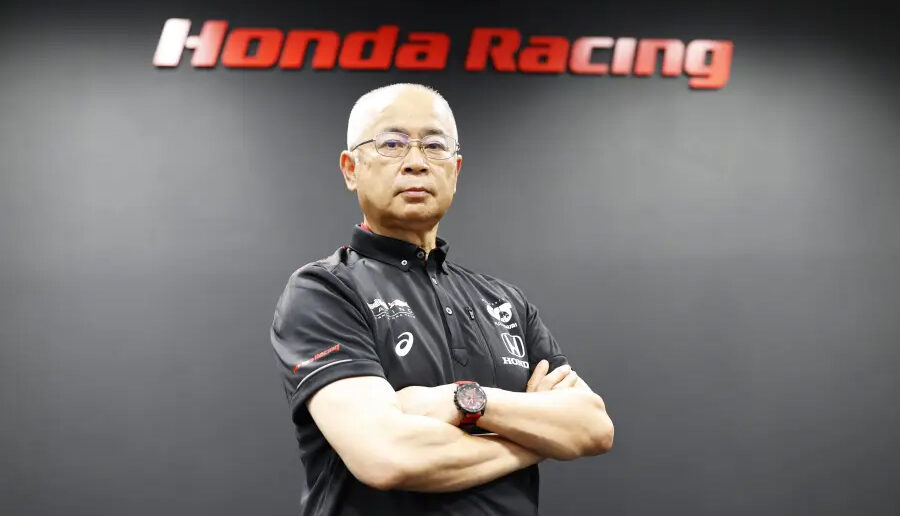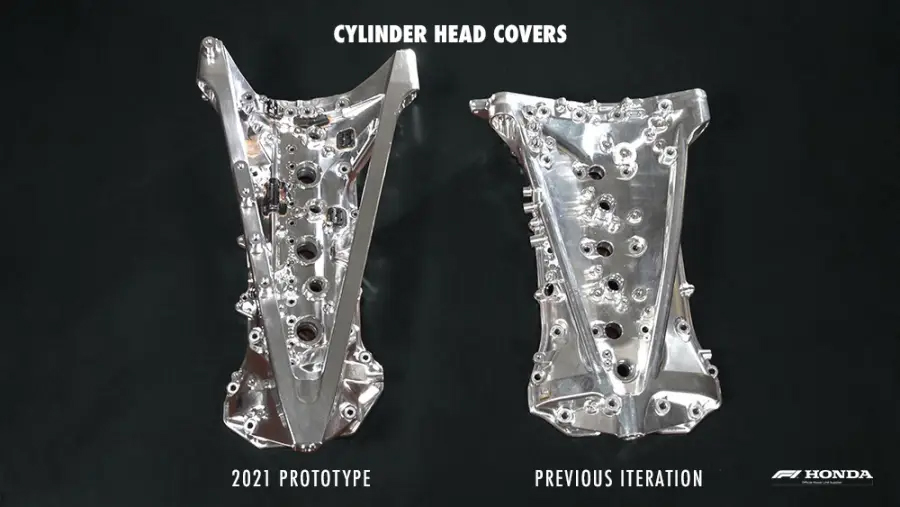2020 appears to be the year that Honda’s Formula 1 power unit (PU) has come good. However, the manufacturer is set to withdraw from the sport at the end of the season, though its PU will live on in the hands of Red Bull’s new powertrain operation.
The company described its PU as all-new for this year, with head of power unit development Yasuaki Asaki providing an insight into the development of the unit and the challenges it presented.
“The original plan was to implement this new structure PU this year,” Asaki noted. “But then for a variety of reasons, it was decided not to proceed with a brand-new PU. However, the thinking on this really changed when Honda announced that we would be leaving the sport. I went to President Hachigo, and said to him that we would really like to implement this new structure PU for our last year in the sport. And he kindly accepted that request.
“With the green light given, our engineers got to work on trying to get everything ready for the new season. That was never going to be an easy task, given the scope of the changes being made to the power unit’s architecture.”
Much of the work focused on the top end of the IC engine, with a revised camshaft layout allowing for more compact packaging and reduced CofG. “We’ve also had to change the valve angle. The main point of what we’ve changed was to improve combustion efficiency. To do so, we had to change the valve angle, and to do that we had to change the camshaft,” added Asaki-san. “We’ve also had to make the head cover lower and more compact, which means that the way that air flows over it has become a lot better. And we’ve also lowered the center of gravity of the ICE.”

Further improving the engine packaging, the BCD (bore center distance) was reduced, with a knock-on effect on overall engine length. Asaki detailed that “in the old engine straddling the transmission we also had a bank offset whereby the left bank was slightly offset from the right bank. So what we’ve done is reverse this offset on the new engine so that the right bank is forward and the left bank is back. I’m sure you’ll appreciate this is a completely new engine. And we’ve been able to bring it to a point where in just six months we’ve taken it testing without any issues.”
Combustion efficiency and the overall efficiency of the power unit also came in for close attention, Asaki highlighting the balancing act that was involved. “Another point that we’ve had to think about is the fact that combustion efficiency has got better. And the camshaft output has got better. Due to the rules of physics, the amount of energy that can be stored has changed and it meant that the amount of exhaust energy has decreased. So compared with the recovery that we were getting last year, what we’re having to do is increase the amount of crankshaft output, and at the same time ensure that there’s a good level of exhaust output, exhaust temperature as well.”
Even though this development work took place across a very condensed six-month period and required a focus on reliability as well, Asaki said his team was able to ensure all of the significant developments were included in the new design.
“I believe that we were able to implement everything that we have to in order to compete with Mercedes. We had a lot of cooperation from Red Bull, making sure that we could get the most from this new compact engine. Until the summer we were working on the basis that it was going to be the previous, bigger engine.”
To achieve this required collaboration from different departments within the wider Honda company, as well as the power unit team leaning on its past experiences of major development challenges. “This is the first time that we’ve gone as far as changing the structure of the PU itself. But I think the biggest challenge that we’ve had up to this point was back in the McLaren days, when we made big changes to the MGU-H, we changed the positioning of the compressor and turbine in relation to the V bank – I think the biggest challenges were back then,” pointed out Asaki.
He highlighted that input from Honda’s motorcycle arm was of particular importance. “Honda Motor has helped us with various different points, but one of the points I’d like to mention is a cylinder sleeve plating, produced by our plant in Kumamoto – it’s called the Kumamoto plating. The Kumamoto plant is actually a motorbike factory, but within Honda there’s a substantial amount of collaboration between the two-wheel production and four-wheel production areas.”
He also addressed the fact that the company was leaving the sport, and the impact this could have had on the motivation of his engineers. “I had acknowledged in some ways that it was an incredibly challenging target. But I think our engineers have had both the understanding that yes we’ve only got a year left but also we’ve got a full year left and we have to do something with that time, and they’ve worked hard during the time that we have had.”



